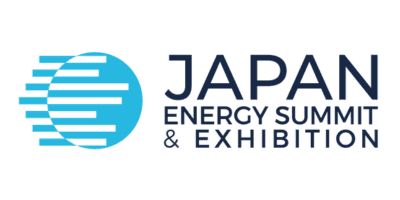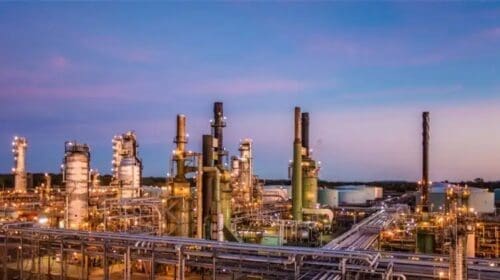As new sources of hydrocarbons are uncovered by aggressive exploration projects, pipeline operators tend to be under constant social and financial pressure to avoid commodity releases. This is why the industry employs some safe practices which work in a manner of industrial-strength prevention, detection and mitigation innovations.
‘Pipeline Integrity’ is an umbrella phrase that encompasses most of these technological innovations that are deployed in order to counter commodity releases. It also signifies a comprehensive program that is put to use to ensure hazardous commodities aren’t mistakenly released from their respective pipelines. Not only does this practice mitigate the probability of releases but it also has the ability to minimize the dangerous impact of a potential release.
Pipeline integrity – in terms of a more practical definition, is comprised of 3 phases:
- Prevention
Solutions and activities are put in place to avoid leaks in the first place. This is done with the help of proper designs, constructions, operations, maintenances, education and training.
- Detection
These solutions and activities can help operators detect a commodity leak when it occurs.
- Mitigation
Solutions and activities that are meant to minimize the overall impact of leaks and their related damages.
Prevention
I. Design and Construction
1. Avoiding Geo-Hazards along Pipeline Routes
Many of the decisions of design are located where the points of supply and delivery are. This is why offline design tools like geographical maps, aerial photography, and satellite imagery need to be used in order to understand geographical terrains. With the help of these tools, various geographical hazards can be identified beforehand.
2. Ensuring That Compressors or Pumps are Sized Correctly
Simulations can help determine the feasibility of hydraulics along with determining whether the compressor or pumps are being utilized in an economical manner or not.
3. Ensuring Surge Suppression Equipment are Sized Correctly
Again, simulation tools can be used here in order to determine the design criterion of equipment for surge suppression.
4. Protecting Pipelines against Corrosion
Pipelines can be protected from corrosion with the help of special coatings and cathodic protection systems.
II. Maintenance and Operations
1. Monitor Operating Pressures
Simulation models that determine what different pressures can do inside a pipeline in real-time have the ability to let operators know what the maximum operating pressures (MAOP) are at different locations.
2. Internal and External Inspection of Pipeline Integrities
NDT or non-destructive testing is an advanced method of determining structural damages on the external walls of pipelines alongside magnetic particle testing and ultrasonics. In terms of internal testing, however, ILI or high-resolution forms of in-line inspection are a very important tool.
3. Proper Calibration of Monitoring Devices
Different calculated values can be put to test with the help of real-time transient models. These can be used in terms of temperatures, flow rates and pressures.
III. Training and Education
Operators need to be educated and trained in order to recognize conditions and situations which could lead to dangerous commodity releases. That being said, it is also important to educate residents who live close to pipelines to avoid leakage problems.
There are some tools that should definitely be on the checklist of operators for a more realistic training experience. These include:
- OTS or Operator Training Simulators
- HMI or Human Machine Interface Applications
- Alarm Management Hierarchies
- ‘Dig Safe’ Programs and Community Outreach Strategies
Detection
The technologies and tools that are used in order to detect commodity released after they have potentially occurred are split into two forms:
I. External Based Systems
These systems have been in place for a long time and are used because they have the ability to detect the smallest of a spill and locate it with the highest accuracy. These systems are divided into 3 subsets and their respective technologies or methods.
1. Sensing Based
- Acoustic sensors detecting changes on pipeline
- Fiber optic sensing distributed acoustic changes
- Fiber optic sensing temperature changes
- Sleeve on outside of pipeline
2. Imaging Based
- Imaging using satellites/planes
- Imaging using cameras
- Thermal imaging using cameras
3. Patrol Based
- Plane/helicopter
- Cars
- Dogs
II. Internal Based Systems
These systems are commonly known as CPM or computational pipeline monitoring and have been around for about 30 years or so. They have the ability to help operators with the help of software that undertakes a wide variety of measurements inside the pipelines. With the help of these measurements, the software can then detect different conditions or anomalies inside the pipeline which could possibly lead to a commodity release.
Nowadays, the 5 most common forms of COM methods include:
- Acoustic/negative pressure wave techniques
- Pressure/flow monitoring CPM
- Statistical analysis CPM
- Real-time transient model (RTTM) CPM
- Line balance CPM techniques
Mitigation
The 3rd and final aspect of minimizing the impacts of pipeline integrity includes the mitigation process. It is important because major releases can have a significantly negative impact on the environment. This is why such incidents – whether on a minor or major scale – require a number of resources from operators, third-party agencies and emergency response personnel.
That said, whether a major or minor commodity release has occurred, the mitigation process would typically include the following steps:
1. Locate
The time frame to locate a commodity release has been found by most operators to be shortened if a third party agency is used to do so. Even though this is the case, the operator will have to send emergency response teams to physically locate the commodity release in order to start making decisions accordingly.
2. Recover
This involves the most critical decisions that need to be made about the containment, re-routing and general management of the situation. Recovery decisions should normally be made within 8 hours after the initial commodity release.
3. Clean-Up
This last phase continues on until the site where the incident occurred has been completely cleaned up. In some cases, this could take the respective operator a few days and in others, it could even take months. All of this depends entirely on the extent of the commodity leak.
Oil and gas operations are commonly found in remote locations far from company headquarters. Now, it's possible to monitor pump operations, collate and analyze seismic data, and track employees around the world from almost anywhere. Whether employees are in the office or in the field, the internet and related applications enable a greater multidirectional flow of information – and control – than ever before.









